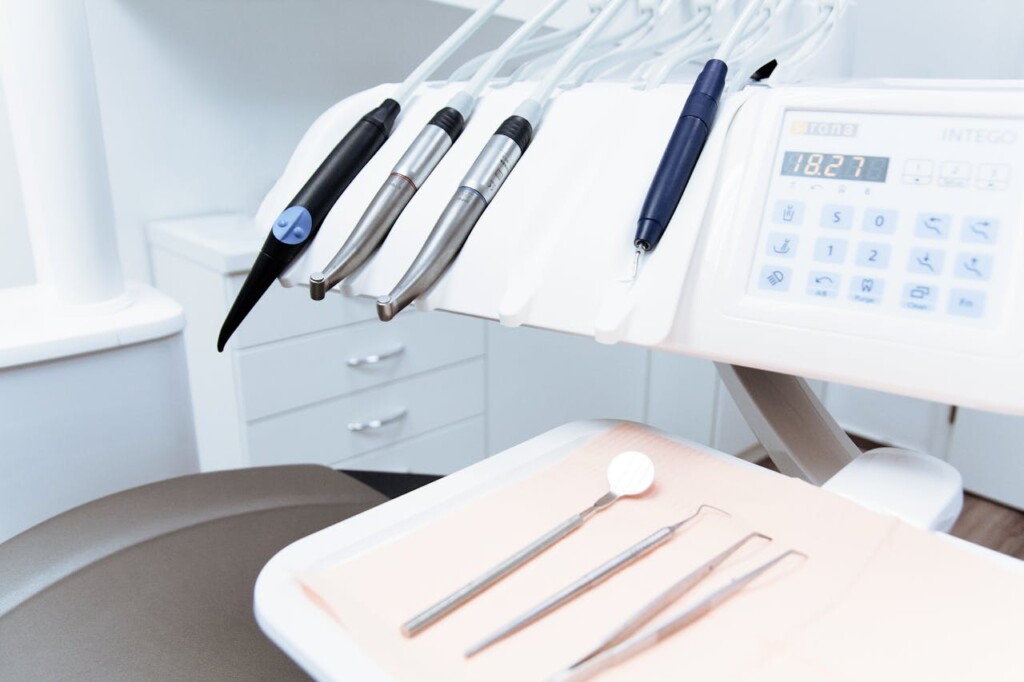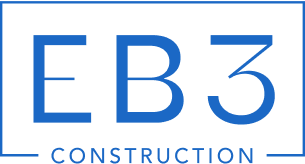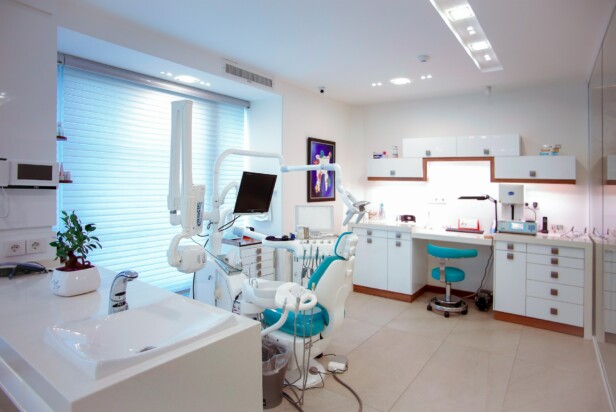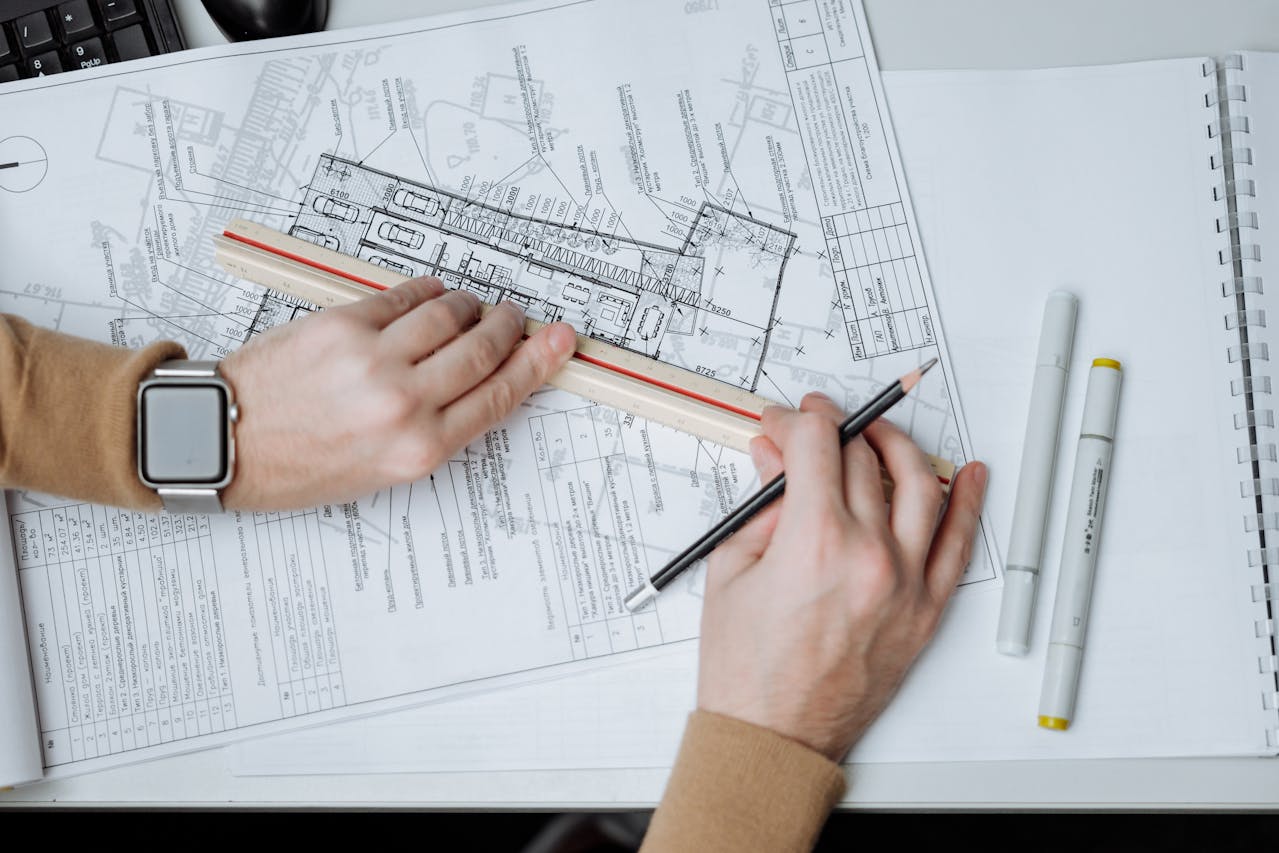Building a dental practice requires more than standard construction expertise. Dental office construction demands specialized knowledge of complex infrastructure systems that support clinical operations. Water lines, compressed air networks, suction systems, and specialized electrical circuits must integrate seamlessly to power modern dental equipment.
The construction process extends far beyond laying foundation and framing walls. We coordinate plumbing services for operatories, install sterilization room utilities, and ensure electrical systems meet the demanding power requirements of digital imaging and treatment equipment. Planning decisions made during early design phases directly impact daily workflow, patient safety, and operational efficiency for decades to come.
What Does Dental Office Construction Cost And Which Factors Drive The Budget?

Construction costs per square foot vary dramatically based on project scope and regional markets. Basic dental construction typically ranges from $100 to $200 per square foot when equipment costs remain separate. However, comprehensive projects that include higher-end finishes and specialized systems can reach $250 to $450 per square foot.
Location drives significant cost variations. Urban markets with expensive labor and materials push construction costs higher, while rural areas often provide more affordable options. The type of space also matters. New construction generally costs more than tenant improvements, though existing buildings may require extensive modifications to support dental operations.
Preliminary Costs That Shape Your Budget
We always advise clients to budget for costs that occur before construction begins. Land acquisition or property purchase represents a major upfront expense that varies widely by location. Design and architecture fees typically consume 8% to 12% of total construction costs, making them a substantial budget item that requires careful planning.
Permits and licensing fees add another layer of expense. These costs depend on project complexity and local regulatory requirements. Some municipalities charge flat fees, while others base costs on project value or square footage.
Key Cost Drivers In Dental Construction
Several factors significantly influence the final construction budget. Office size directly impacts costs, with larger spaces requiring more materials, labor, and systems. The number of operatories drives mechanical and electrical complexity, as each treatment room needs dedicated utilities and specialized ventilation.
Material selection creates major budget variations. Standard commercial finishes cost substantially less than premium materials, though durability and maintenance requirements should guide these decisions. Mechanical and electrical systems represent another significant cost driver, particularly when supporting compressed air, suction systems, and specialized dental equipment power requirements.
Technology integration can substantially increase construction costs. Digital imaging systems, network infrastructure, and specialized equipment mounting requirements all add complexity and expense to the build-out process.
Budget Optimization Strategies
Smart design choices can stretch construction budgets without compromising functionality. Multi-functional spaces serve multiple purposes, reducing total square footage requirements. A consultation room that doubles as a minor procedure space eliminates the need for dedicated single-use areas.
Energy-efficient systems increase upfront costs but reduce long-term operational expenses. High-performance HVAC systems, LED lighting, and proper insulation lower utility bills over the facility’s lifespan. We often recommend these investments to property owners looking at total cost of ownership rather than just initial construction expenses.
Cost-effective material alternatives provide durability without premium price tags. Luxury vinyl tile flooring offers the appearance of hardwood at a fraction of the cost. Similarly, engineered surfaces can replicate expensive stone countertops while providing better stain resistance and easier maintenance.
Getting multiple local bids remains essential for accurate budget planning. We recommend securing at least three detailed estimates from contractors experienced in dental construction. Each bid should include identical scope specifications to enable accurate comparison. Verify references and examine past dental projects before making contractor selections.
How Should Operatories And Support Spaces Be Planned For Function And Flow?
Operatories serve as the central hub of any dental practice, making their design critical to overall workflow efficiency. We establish treatment rooms as the foundation and arrange all support spaces around them for optimal function.
Strategic Spatial Relationships
Sterilization areas require direct adjacency to operatories for efficient instrument turnover. We position these spaces within 20 to 30 feet of treatment rooms to minimize staff travel time and maintain sterile protocols. Laboratory functions need similar proximity while staying separate from patient flow areas.
Reception and administrative zones connect to operatories through clear sightlines and short corridors. This arrangement allows staff to monitor patient movement while maintaining privacy during treatments. We design these connections to avoid crossing paths between sterile and non-sterile activities.
Essential Utility Infrastructure
Each operatory demands comprehensive utility support that goes beyond basic electrical service. Water supply lines must deliver consistent pressure for dental units and handpieces. Compressed air systems require dedicated piping with proper filtration to prevent contamination of pneumatic instruments.
Suction systems need appropriately sized waste lines that can handle both liquid waste and debris without backing up. We install separate vacuum lines for saliva ejectors and high-volume suction to ensure adequate performance during procedures. Power requirements include multiple dedicated circuits for dental equipment, computers, and specialized lighting.
Noise Management Through Strategic Placement
Mechanical equipment generates significant noise that disrupts patient comfort and staff communication. We isolate air compressors and vacuum pumps in dedicated utility rooms with sound dampening materials. These spaces require adequate ventilation while remaining acoustically separated from clinical areas.
Equipment rooms typically locate in basement areas or behind operatories where noise transmission affects fewer spaces. Sound-rated walls and doors further reduce noise transfer to treatment and waiting areas.
Accessibility Planning
ADA compliance extends throughout the entire layout, not just individual rooms. We ensure wheelchair-accessible routes connect all patient areas without requiring navigation through staff-only zones. Door widths, turning radii, and counter heights must meet accessibility standards in operatories, restrooms, and consultation areas.
Staff accessibility matters equally for daily operations and emergency situations. We design adequate circulation space for equipment movement and emergency egress from all work areas.
Equipment-Driven Design Solutions
Dental equipment manufacturers provide detailed floor plan templates that optimize cabinetry placement and equipment positioning. We use these specifications during initial planning to ensure adequate space allocation and proper utility rough-ins.
Cabinetry configurations must accommodate specific equipment while providing efficient storage and workspace. Templates help us coordinate plumbing connections, electrical requirements, and equipment mounting points before construction begins.
Storage And Staff Area Planning
Adequate storage prevents workflow bottlenecks by keeping supplies accessible without cluttering clinical spaces. We plan central supply areas with easy access from multiple operatories. Bulk storage areas separate from daily-use storage to maintain organization.
Staff areas require sufficient space for breaks, documentation, and administrative tasks. We position these areas with good visibility to clinical zones while providing privacy for confidential activities. Adequate staff facilities improve retention and job satisfaction.
Which Legal And Regulatory Requirements Apply During Dental Office Construction?

Dental office construction operates under multiple layers of regulation that span federal, state, and local jurisdictions. We encounter requirements from the Americans with Disabilities Act, local zoning ordinances, building safety codes, and specific dental practice regulations. Each level adds complexity but serves essential purposes for patient safety, accessibility, and operational compliance.
The scope of regulatory oversight extends beyond basic construction standards. Environmental agencies govern waste management systems, occupational safety rules dictate ventilation requirements, and privacy laws influence facility design. Understanding these overlapping requirements early prevents costly redesigns and construction delays.
ADA Accessibility Standards And Their Impact
The Americans with Disabilities Act establishes minimum accessibility requirements that affect numerous construction elements. Parking areas must include designated accessible spaces with proper signage and van-accessible dimensions. Entrance pathways require specific slope ratios for ramps, adequate door widths, and appropriate opening force measurements.
Interior accessibility standards influence treatment room design significantly. Door widths must accommodate wheelchairs, and turning spaces within operatories need sufficient clearance. Counter heights, light switch placement, and emergency alarm systems all fall under ADA specifications. Patient restrooms require grab bars, specific fixture heights, and clear floor space measurements.
Compliance requirements vary based on construction type. New dental office construction must meet all current ADA standards without exception. Renovation projects face different rules where full compliance may not be feasible due to structural limitations. Existing facilities without renovation need only remove architectural barriers “to the extent possible” rather than achieving complete accessibility compliance.
Building Codes And Zoning Considerations
Local building codes establish safety standards for structural integrity, fire protection, and electrical systems. These codes determine ventilation requirements, emergency exit placement, and load-bearing capacity for dental equipment. Fire protection systems often require specialized suppression equipment in areas with nitrous oxide storage or use.
Zoning laws control where dental practices can operate and may restrict business hours, signage, and parking ratios. Some jurisdictions classify dental offices as medical facilities requiring specific zoning approvals. Others treat them as general commercial uses with different requirements. Understanding local zoning before site selection prevents expensive permit delays.
Construction contracts should explicitly require compliance with all applicable codes. We recommend including language that makes contractors responsible for obtaining necessary permits and meeting inspection requirements. This approach protects practice owners from liability while ensuring proper oversight throughout the construction process.
OSHA And EPA Requirements For Dental Facilities
Occupational Safety and Health Administration standards affect dental office design through workplace safety requirements. Ventilation systems must adequately remove chemical vapors from sterilization areas and nitrous oxide from treatment rooms. Chemical storage areas need proper containment, labeling, and access controls to protect staff from hazardous exposures.
The Environmental Protection Agency provides guidance on waste management systems and radiation protection measures. Dental offices generate various waste streams including amalgam, chemicals, and potentially infectious materials. Proper containment and disposal systems must be integrated into the facility design from the beginning.
Radiation shielding requirements apply to facilities using X-ray equipment. Wall thickness, door specifications, and room positioning all factor into radiation protection compliance. We coordinate with qualified radiation safety consultants to ensure proper shielding design and installation.
HIPAA Privacy Considerations In Facility Design
The Health Insurance Portability and Accountability Act influences physical facility design through privacy protection requirements. Reception areas need visual barriers to prevent unauthorized viewing of patient information. Sound barriers between treatment rooms protect patient confidentiality during consultations and procedures.
Administrative areas require secure storage for patient records and controlled access to computer systems containing protected health information. These requirements affect room placement, locking mechanisms, and staff workflow patterns throughout the facility.
Patient flow design must consider privacy during check-in, checkout, and movement between treatment areas. We design pathways that minimize patient interactions and provide discrete access to consultation rooms when needed.
Professional Legal Guidance And Contract Protection
Consulting qualified legal counsel early in the planning process helps identify applicable requirements and potential compliance challenges. Attorneys experienced in healthcare facility construction understand the interplay between federal, state, and local regulations. They can review construction contracts to ensure adequate protection and compliance obligations.
Construction contracts should include specific compliance requirements and assign responsibility for meeting regulatory standards. We recommend requiring contractors to demonstrate familiarity with dental facility regulations and provide evidence of successful similar projects. Penalty clauses for non-compliance help ensure contractors take regulatory requirements seriously.
Documentation requirements extend throughout the construction process and into ongoing operations. Permits, inspection records, and compliance certifications become part of the permanent facility record. Proper documentation protects against future regulatory challenges and supports any necessary modifications or expansions.
How Do You Select A Contractor And Make Smart Design And Equipment Choices?
Choosing the right contractor for dental office construction requires specialized experience beyond general commercial building. We look for contractors who understand the unique requirements of dental facilities: precise utility placement for equipment, noise isolation strategies, and workflow optimization around clinical operations.
Verify Contractor Credentials And Experience
Ask potential contractors about their specific dental office projects. Request detailed examples of treatment room layouts, sterilization areas, and mechanical system installations they’ve completed. Contractors with dental construction experience understand critical elements like compressed air system sizing, suction line routing, and electrical requirements for imaging equipment.
We recommend checking references by contacting past dental clients directly. Ask about project timeline adherence, change order frequency, and whether the contractor understood clinical workflow requirements. Quality contractors provide references willingly and can explain how they addressed dental-specific challenges in previous projects.
Secure Multiple Bids For Accurate Comparison
Multiple bids reveal cost variations and construction approach differences among contractors. We ensure each bid includes identical scope specifications to enable meaningful comparisons. Detailed line-item breakdowns help identify where contractors allocate costs differently for materials, labor, and specialized systems.
Compare bid timelines alongside costs. Experienced dental contractors often provide realistic schedules that account for equipment coordination, inspection requirements, and system commissioning. Unrealistically fast timelines may indicate inexperience with dental construction complexities.
Optimize Design For Operational Efficiency
Multi-use rooms maximize space utilization and reduce construction costs. We design consultation rooms that serve both treatment planning and financial discussions. Storage areas accommodate multiple functions, from supply management to staff break spaces. This approach reduces square footage requirements while maintaining operational efficiency.
Energy-efficient systems lower long-term operational costs significantly. We specify high-efficiency HVAC systems with proper filtration for dental environments, LED lighting throughout the facility, and insulation that exceeds code requirements. These investments pay dividends through reduced utility costs and improved patient comfort.
Select Durable Materials For Long-Term Value
Material alternatives can provide cost savings without compromising durability. We evaluate options like quartz countertops over granite for consistent appearance at lower cost, or luxury vinyl plank flooring that offers durability and easy maintenance in high-traffic areas. Soft-close hardware reduces noise levels while extending cabinet life.
Infection control requirements influence material selection throughout the facility. We choose non-porous surfaces for treatment areas, antimicrobial finishes where appropriate, and materials that withstand frequent cleaning with dental-grade disinfectants. These choices support both regulatory compliance and long-term facility maintenance.
Invest In Equipment For Practice Success
Equipment durability directly impacts practice efficiency and patient experience. We prioritize reliable manufacturers with strong service networks and proven track records in dental applications. Quality equipment reduces maintenance costs and minimizes treatment interruptions that affect patient satisfaction.
Technology integration requires careful planning during construction. We coordinate with equipment suppliers to ensure proper electrical capacity, network infrastructure, and mounting provisions for digital systems. This coordination prevents costly modifications after construction completion and ensures seamless technology implementation.
Conclusion And Next Steps

Successful dental office construction brings together careful cost control, systematic functional planning, and unwavering compliance with regulations. We’ve seen how these elements work together to create clinics that serve both practitioners and patients effectively.
Early planning sets the foundation for success. Define your scope and budget before any construction begins. Map utilities and adjacencies around operatories to optimize workflow. Plan for ADA requirements and safety regulations from the start rather than retrofitting later. Multiple project bids from experienced contractors provide both competitive pricing and valuable insights into construction approaches. A structured budget plan with clear allowances for design fees, permits, build-out costs, and equipment purchases keeps financial planning on track throughout the process.
Ready to start your dental office construction project? Contact EB3 Construction to discuss how we can help bring your vision to life.




